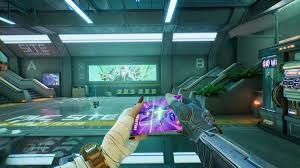
The article highlights four key innovations that make Fragpunk more accessible:
- Shard Cards – Random modifiers that players vote on between rounds, introducing unpredictable elements and keeping the game lighthearted.
- Non-restrictive weapon selection—Unlike Counter-Strike’s economy system, Fragpunk lets players choose any weapon, though there is a limit of two uses per weapon category per half.
- Shorter matches – Games are best of seven rounds and last about 15 minutes, preventing the frustration of being stuck in long, one-sided matches.
- No ultimate abilities – While the game has heroes with abilities, it avoids overpowered “ultimate” moves that tend to dominate other hero shooters.

The author also appreciates that Fragpunk uses straightforward gunplay where bullets go where you aim, unlike the recoil patterns in CS2 and Valorant.
Analysis of Fragpunk
Based on the article, Fragpunk represents an innovative approach to tactical shooters by successfully creating a more casual experience while preserving core tactical shooter elements. Let me break down the key aspects of the game:
Core Innovation: Casual Tactical Shooter
Fragpunk’s primary achievement is creating what the author calls “casual Counter-Strike” – something previously thought impossible. The game manages to maintain tactical shooter fundamentals (bomb sites, economy, silent walking, low time-to-kill) while significantly reducing the stress and competitive intensity typical of games like CS2.
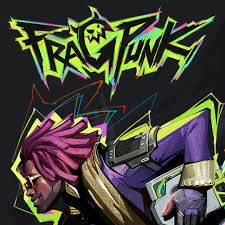
Key Design Elements
1. Shard Cards System
- Acts as both economy and randomizer
- Player-voted modifiers between rounds
- Range from minor buffs to game-changing rules (removing bomb sites, knife-only rounds)
- Strategic depth through banking points for multiple activations
- Serves to defuse player frustration (“hard to feel like you messed up” when losing to unusual modifiers)

2. Weapon System Overhaul
- No traditional buy menu restrictions
- All weapons available immediately, including power weapons
- Limited uses per weapon category (two per half)
- Balances freedom with strategic decision-making
- Eliminates “slumming it with just a pistol” scenarios
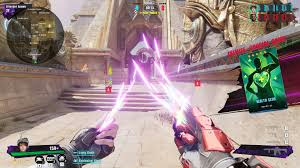
3. Match Structure
- Best of 7 rounds (approximately 15 minutes)
- Significantly shorter than traditional tactical shooters
- Reduces commitment and frustration
- Ranked mode extends to best of 11 (still shorter than competitors)
- Quick resolution prevents being “trapped in a 40-minute slog of a loss”
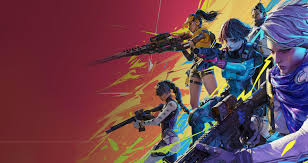
4. Hero Design Philosophy
- Includes hero characters with abilities but no ultimates
- Avoids the ability-dominated gameplay of Overwatch or Valorant
- No single move is powerful enough to win entire rounds
- Maintains focus on gunplay over ability usage
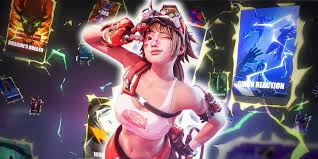
5. Gunplay Mechanics
- Traditional recoil system where bullets follow aim
- Rejects the “funky recoil patterns” of CS2/Valorant
- More accessible and intuitive for average players
- Similar to most mainstream FPS games

Market Positioning
Fragpunk positions itself at an interesting intersection:
- Part Counter-Strike (tactical round-based)
- Part Valorant (hero elements without ultimates)
- Part Call of Duty (accessible gunplay)
- Part casual party game (Shard Cards)
This unique blend could appeal to players who find traditional tactical shooters too stressful or time-consuming while still offering enough tactical depth to be engaging.

Player Experience
The article suggests Fragpunk creates a distinctly different player experience:
- Lower stress levels
- Reduced frustration
- Greater emphasis on fun over competition
- Shorter time commitment
- More variety through the Shard Card system
- Balance accessibility and skill-based gameplay
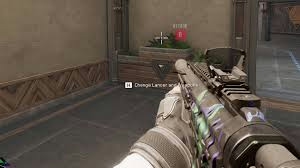
Potential Impact
If successful, Fragpunk could represent a new subgenre that bridges the gap between hardcore tactical shooters and more casual FPS games, potentially bringing in players who have been intimidated by the high skill floor of games like Counter-Strike while still offering enough depth to maintain interest.
The game appears to recognize that not every player wants the extreme pressure and commitment of traditional tactical shooters while still appreciating their core strategic elements.
Analysis of Fragpunk
Based on the article, Fragpunk represents an innovative approach to tactical shooters by successfully creating a more casual experience while preserving core tactical shooter elements. Let me break down the key aspects of the game:
Core Innovation: Casual Tactical Shooter
Fragpunk’s primary achievement is creating what the author calls “casual Counter-Strike” – something previously thought impossible. The game manages to maintain tactical shooter fundamentals (bomb sites, economy, silent walking, low time-to-kill) while significantly reducing the stress and competitive intensity typical of games like CS2.
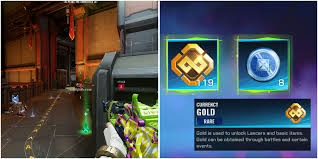
Key Design Elements
1. Shard Cards System
- Acts as both economy and randomizer
- Player-voted modifiers between rounds
- Range from minor buffs to game-changing rules (removing bomb sites, knife-only rounds)
- Strategic depth through banking points for multiple activations
- Serves to defuse player frustration (“hard to feel like you messed up” when losing to unusual modifiers)
2. Weapon System Overhaul
- No traditional buy menu restrictions
- All weapons available immediately, including power weapons
- Limited uses per weapon category (two per half)
- Balances freedom with strategic decision-making
- Eliminates “slumming it with just a pistol” scenarios

3. Match Structure
- Best of 7 rounds (approximately 15 minutes)
- Significantly shorter than traditional tactical shooters
- Reduces commitment and frustration
- Ranked mode extends to best of 11 (still shorter than competitors)
- Quick resolution prevents being “trapped in a 40-minute slog of a loss”
4. Hero Design Philosophy
- Includes hero characters with abilities but no ultimates
- Avoids the ability-dominated gameplay of Overwatch or Valorant
- No single move is powerful enough to win entire rounds
- Maintains focus on gunplay over ability usage
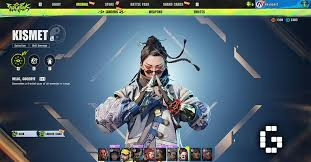
5. Gunplay Mechanics
- Traditional recoil system where bullets follow aim
- Rejects the “funky recoil patterns” of CS2/Valorant
- More accessible and intuitive for average players
- Similar to most mainstream FPS games
Market Positioning
Fragpunk positions itself at an interesting intersection:
- Part Counter-Strike (tactical round-based)
- Part Valorant (hero elements without ultimates)
- Part Call of Duty (accessible gunplay)
- Part casual party game (Shard Cards)
This unique blend gives it potential appeal to players who find traditional tactical shooters too stressful or time-consuming while still offering enough tactical depth to be engaging.

Player Experience
The article suggests Fragpunk creates a distinctly different player experience:
- Lower stress levels
- Reduced frustration
- Greater emphasis on fun over competition
- Shorter time commitment
- More variety through the Shard Card system
- Balance of accessibility and skill-based gameplay

Potential Impact
If successful, Fragpunk could represent a new subgenre that bridges the gap between hardcore tactical shooters and more casual FPS games. It could potentially attract players who have been intimidated by the high skill floor of games like Counter-Strike while still offering enough depth to maintain interest.
The game appears to recognize that not every player wants the extreme pressure and commitment of traditional tactical shooters while still appreciating their core strategic elements.
A Complete Review of the DOOM Franchise
Original DOOM Series (1990s)
DOOM (1993)
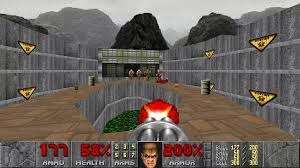
The game that launched the FPS genre into the mainstream. id Software’s original DOOM revolutionized gaming with its fast-paced gameplay, moody atmosphere, and technical innovations. Players take on the role of a space marine battling demons from Hell on Mars and its moons. The sprite-based graphics, level design, and multiplayer options were groundbreaking for their time.
DOOM II: Hell on Earth (1994)
Building on the success of the original, DOOM II brought the demonic invasion to Earth. It introduced new weapons (notably the Super Shotgun) and enemies while refining the formula that made the original so successful. The level design was more complex, and the game maintained the high-octane action of its predecessor.
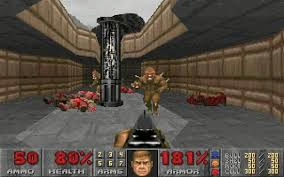
Final DOOM (1996)
This standalone expansion featured two 32-level episodes created by the DOOM community: “TNT: Evilution” and “The Plutonia Experiment.” Known for its highly challenging gameplay, especially Plutonia, which is considered among the most demanding official DOOM content ever released.
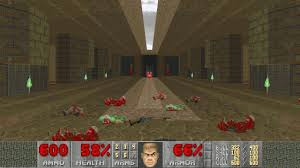
DOOM 3 Era (2000s)
DOOM 3 (2004)
A significant departure from earlier games, DOOM 3 focused on horror elements and atmosphere over fast-paced action. Using id Tech 4 engine, it featured impressive lighting effects and a darker tone. The gameplay was slower, emphasizing tension and fear rather than the run-and-gun style of its predecessors. While divisive among fans, it showcased impressive technical achievements for its time.
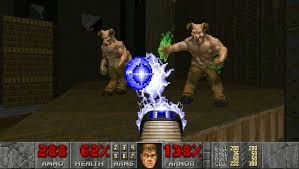
DOOM 3: Resurrection of Evil (2005)
This expansion added new weapons, including the gravity-manipulating Grabber and the iconic double-barreled shotgun. It continued the horror-focused approach while slightly increasing the pace of combat.
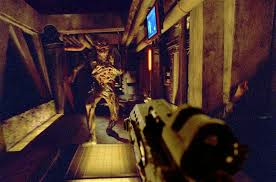
DOOM 3: BFG Edition (2012)
A remastered version that included improved graphics, a shoulder-mounted flashlight (addressing a significant criticism of the original), and bundled expansions. It also included the original DOOM and DOOM II as bonus content.
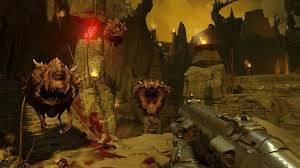
Modern DOOM Revival (2010s-2020s)
DOOM (2016)
Often called “DOOM 2016,” this reboot returned to the fast-paced, aggressive gameplay of the originals while modernizing the formula. The “push-forward combat” system encouraged players to constantly engage enemies through the Glory Kill system, which rewarded aggressive play with health pickups. The game received critical acclaim for successfully modernizing DOOM while maintaining its essence.
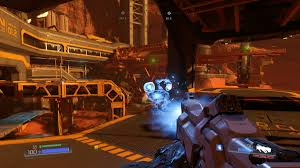
DOOM Eternal (2020)
Building on DOOM 2016, Eternal added more mobility options (dash, meat hook), resource management (with separate pickups for health, armor, and ammo), and more complex combat encounters. It expanded the lore significantly and introduced platforming elements. While some fans found the increased complexity divisive, many consider it the pinnacle of DOOM gameplay.
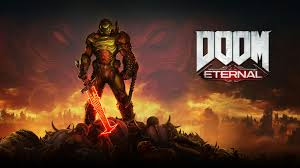
DOOM Eternal: The Ancient Gods (Parts 1 & 2, 2020-2021)
These expansions continued the story of DOOM Eternal and were known for their extreme difficulty, testing even veteran players with challenging enemy combinations and environmental hazards.
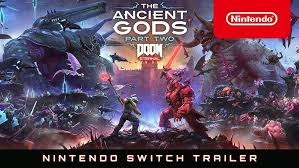
Spin-offs and Console Adaptations
DOOM 64 (1997)
Exclusive to Nintendo 64 until its 2020 remaster, DOOM 64 featured unique level design, modified weapons, and a darker atmosphere than previous entries. It’s often considered an underappreciated gem in the series.
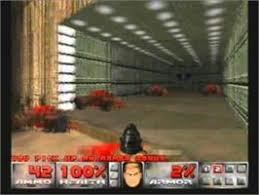
DOOM RPG & DOOM II RPG (2005, 2009)
Mobile phone turn-based RPGs that adapted DOOM’s combat to a different genre while maintaining its aesthetic and enemies.
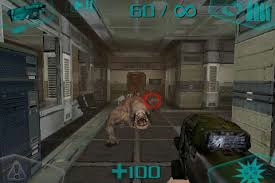
DOOM VFR (2017)
A virtual reality adaptation explicitly designed for VR platforms, offering a unique way to experience the DOOM universe.

Upcoming Entry
DOOM: The Dark Ages (2025)
Recently announced by Bethesda, this new entry takes the Doom Slayer to a medieval hell setting. It features a new Shield Saw weapon and reportedly focuses more on ground-based combat compared to Eternal’s movement-heavy approach. It will include rideable dragons and pilotable mechs, suggesting an even more bombastic approach to the franchise.
The DOOM series has consistently redefined the FPS genre across multiple decades, with its influence extending to countless other games. From establishing core FPS mechanics to pushing technical boundaries, DOOM remains one of gaming’s most essential and enduring franchises.

Maxthon
Maxthon has set out on an ambitious journey aimed at significantly bolstering the security of web applications, fueled by a resolute commitment to safeguarding users and their confidential data. At the heart of this initiative lies a collection of sophisticated encryption protocols, which act as a robust barrier for the information exchanged between individuals and various online services. Every interaction—be it the sharing of passwords or personal information—is protected within these encrypted channels, effectively preventing unauthorised access attempts from intruders.
 This meticulous emphasis on encryption marks merely the initial phase of Maxthon’s extensive security framework. Acknowledging that cyber threats are constantly evolving, Maxthon adopts a forward-thinking approach to user protection. The browser is engineered to adapt to emerging challenges, incorporating regular updates that promptly address any vulnerabilities that may surface. Users are strongly encouraged to activate automatic updates as part of their cybersecurity regimen, ensuring they can seamlessly take advantage of the latest fixes without any hassle.
This meticulous emphasis on encryption marks merely the initial phase of Maxthon’s extensive security framework. Acknowledging that cyber threats are constantly evolving, Maxthon adopts a forward-thinking approach to user protection. The browser is engineered to adapt to emerging challenges, incorporating regular updates that promptly address any vulnerabilities that may surface. Users are strongly encouraged to activate automatic updates as part of their cybersecurity regimen, ensuring they can seamlessly take advantage of the latest fixes without any hassle.
In today’s rapidly changing digital environment, Maxthon’s unwavering commitment to ongoing security enhancement signifies not only its responsibility toward users but also its firm dedication to nurturing trust in online engagements. With each new update rolled out, users can navigate the web with peace of mind, assured that their information is continuously safeguarded against ever-emerging threats lurking in cyberspace.
